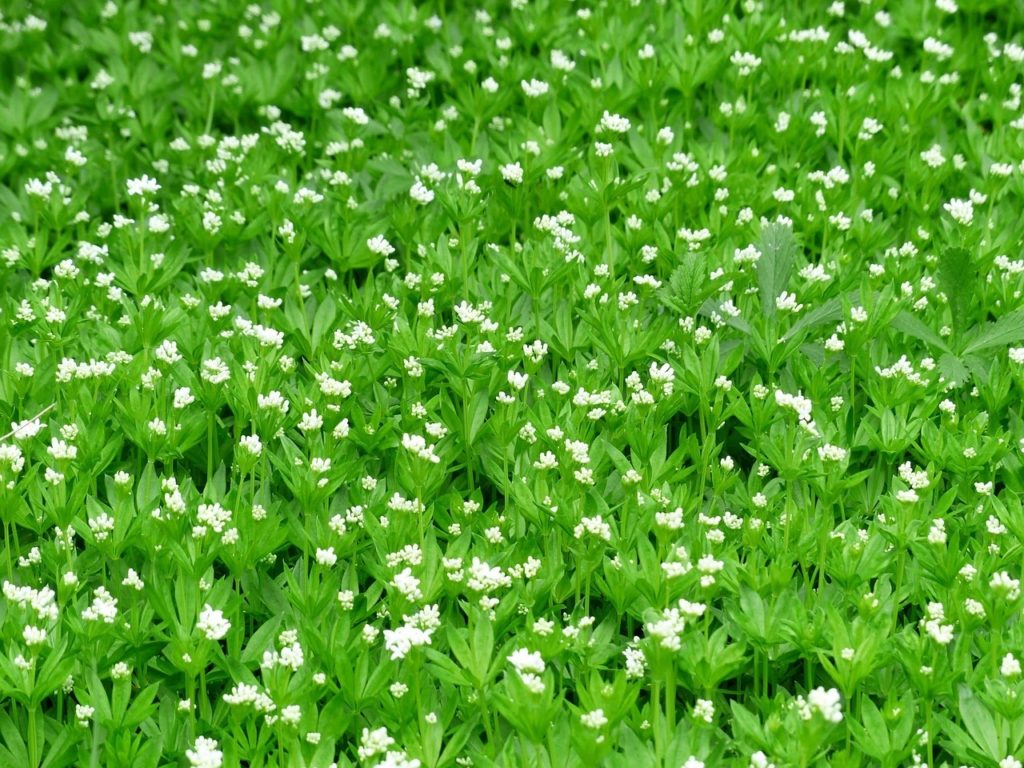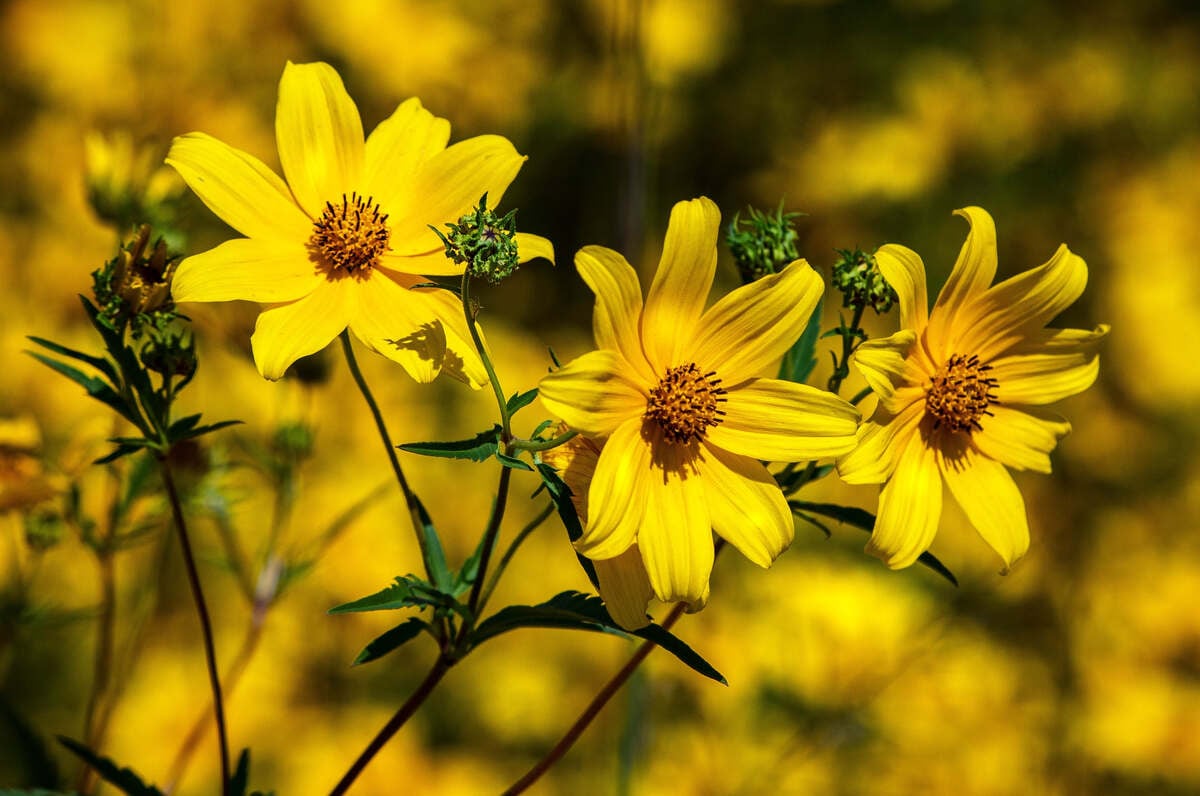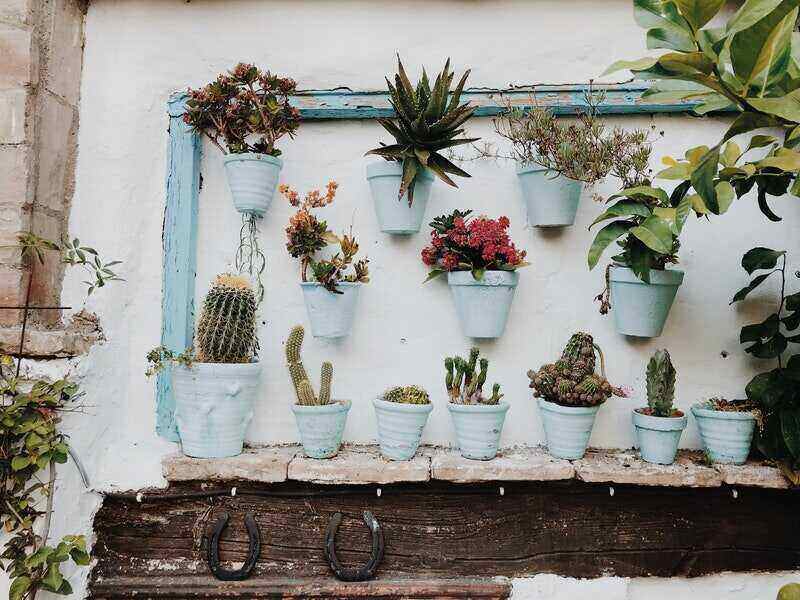
Do you crave a low-maintenance, no-mow landscape? Then, it’s deuces to traditional lawn grass and hello to these low-growing ground covers, instead.
Besides being easy to care for, experts recommend ground covers for help in controlling erosion and weeds.
But which ground covers are best for your yard and your landscaping? There are hundreds of options for ground covers, so we’ve whittled down the list to 15 of the best ground cover plants to help you make your choice.
15 best ground covers for a low-maintenance yard
1. Creeping sedum

A perennial succulent, sedum requires full sun or partial shade. Depending on the type (there are more than 300 species), this drought-tolerant plant will give off large and showy yellow, red, pink, purple, white, green, or orange blooms. Creeping sedum’s leaf color varies, too, from green to chartreuse to black.
USDA Hardiness Zones: 3 to 8
Examples of ground cover sedums: Dragon’s blood, Mexican stonecrop, and blue stonecrop
Care: Low-maintenance; sedum doesn’t need lots of water and can grow in a range of well-drained soils
Flowering: Yes; fall, spring, and summer
Spread: Spreads through its shallow root system. Sedum grows low to ground (only reaches a height of up to 8 inches)
Cost: $9 to $15 for live plants
2. Creeping thyme

Creeping thyme, aka thymus praecox, is a drought-tolerant, ground cover plant that’s a perfect addition to rock gardens, as it does not do well with the heavy foot traffic lawns typically receive. Grown in full sun, thyme is also used to flavor certain foods.
USDA Hardiness Zones: 5 to 8
Examples of ground cover thyme plants: English thyme, caraway thyme, and wooly thyme
Care: Low-maintenance. Keep soil moist and use slow-release fertilizer about once a quarter.
Flowering: Yes, with pink or purple blooms in summer and fall
Spread: Stolons or above-ground stems; reaches 2 to 3 inches in height
Cost: Seeds (about $10), plant trays (about $12), container plants (about $40)
3. Pachysandra

An evergreen, perennial ground cover that prefers full shade, pachysandra is resistant to drought, deer, and rabbits. Cultivate this plant in well-drained soil along slopes and underneath trees and shrubs, and be sure to space them 6 to 12 inches apart to accommodate their spread.
USDA Hardiness Zones: 4 to 9
Examples of pachysandra varieties: Green Carpet, Variegata, Alleghany, Pixie, Eco Treasure
Care: Low-maintenance; can grow well in poor soil conditions
Flowering: Yes; white, aromatic flowers each spring
Spread: Rhizomes or below-ground stems; can reach up to 1 foot in height
Cost: Prices range from about $15 for one tray of pachysandra to $80 (for 100 bare-root plants).
4. Periwinkle

Its scientific name vinca minor, this evergreen perennial thrives in partial or full shade. Plant periwinkle underneath trees and shrubs or along slopes for bursts of color throughout spring, summer, and sometimes fall. Growing to a height of 3 to 6 inches, periwinkle is resistant to drought, deer, salt, erosion, and poor soil.
USDA Hardiness Zones: 4 to 9
Examples of periwinkle varieties: Alba, Flore Pleno, Sterling Silver, Bowles Variety
Care: Low-maintenance; doesn’t need much watering and no major problems with pests
Flowering: Yes; blue, purple, or white, depending on cultivar
Spread: Runners — above-ground stems take root and spread quickly across yards; can sometimes become invasive
Cost: You can purchase an 81-count tray for around $15.
5. Bugleweed

Loved for its ability to quickly fill in large, outdoor spaces where grass may not grow well, bugleweed (ajuga reptans) also boosts curb appeal with its colorful flowers and evergreen foliage. You can plant it just about anywhere, as it flourishes in everything from full shade to full sun. It also stands up to foot traffic and is resistant to deer and rabbits.
USDA Hardiness Zones: 3 to 10
Examples of bugleweed varieties: Catlin’s Giant, Chocolate Chip, Black Scallop
Care: Low-maintenance; no need to fertilize and regular rainfall should be sufficient water
Flowering: Yes; blue, purple, or white flowers in spring and summer
Spread: Runners rapidly creep along the surface of the ground; reaches a height of 3 to 6 inches
Cost: Depending on how many seeds you’d like, prices range from about $4 to more than $400. Or, get a tray of plants for just around $12.
6. Creeping phlox

The perfect option when xeriscaping, this ground cover prospers in full sun and is resistant to drought, pollution, and poor soil conditions. Reaching a height of 4 to 6 inches, creeping phlox produces a carpet-like look.
USDA Hardiness Zones: 3 to 10
Examples of creeping phlox varieties: Candy Stripe, Emerald Blue, Scarlet Flame
Care: Low-maintenance; trim plants back in winter
Flowering: Yes; spring blooms can be red, white, pink, purple, blue, or yellow
Spread: Moderate growth can produce a 2-foot spread per growing season via stolons
Cost: From $4 (seed packet) to $10 (trays) to $14 (potted)
7. Ice plant

While its name stems from the way its colorful flowers glisten in the light, as if touched by frost, this perennial succulent grows best in full sun and hot, dry conditions. Besides a traditional ground cover, ice plants (delosperma) also work well in your garden.
USDA Hardiness Zones: 6 to 10
Examples of ice plant varieties: Cooper’s ice plant, Alan’s Apricot, Starburst, Hardy Yellow
Care: Low-maintenance; drought-tolerant, this plant doesn’t need fertilization
Flowering: Yes; pink/purple blooms in summer and fall; other colors possible depending on the type
Spread: Fast via underground root system; grows 2 to 4 feet wide/3 to 6 inches high
Cost: Get a tray of 6 ice plants for just $11.
8. Spotted deadnettle

Perfect for those spots in your yard mixed with shade and sun, this fast-growing ground cover creates a carpet-like density across your lawn. Spotted deadnettle (lamium maculatum) blooms also attract pollinators, such as bees.
USDA Hardiness Zones: 3 to 8
Examples of deadnettle varieties: Purple Dragon, Shell Pink, Beacon Silver, Orchid Frost
Care: Low-maintenance; keep soil moist and infuse it with compost
Flowering: Yes; purple-pink flowers in late spring/early summer
Spread: Fast — potential to become invasive; reaches 6 to 9 inches in height
Cost: Ranges in price from $6 to almost $20
9. Mondo grass

With a preference for shady areas, mondo grass (also known as dwarf lily turf), is evergreen, salt-tolerant, and resistant to deer. It resembles liriope, but has thinner leaves. Another bonus? You won’t have to stress about major problems with pests and disease.
USDA Hardiness Zones: 6 to 10
Examples of mondo grass cultivars: Nippon, variegatus, kioto, caeruleus
Care: Low-maintenance; mow just once per year
Flowering: Yes; pink, purple, or white, star-shaped blooms
Spread: Slow to moderate growth via runners; reaches 1 foot in height
Cost: Depending on if you purchase in trays or in pots, prices range from $10 to $40 or more.
10. Sweet woodruff

If you’re looking for a ground cover to fill space in your shade garden, sweet woodruff is a great choice. It gives off a sweet-smelling aroma (hence its name), is easy to grow, and is also deer- and rabbit-resistant. In addition to ground cover, some people use this plant in potpourri and perfumes.
USDA Hardiness Zones: 4 to 8
Care: Low-maintenance; plant in full shade or partial shade
Flowering: Yes; white flowers in spring
Spread: Slow to medium growth rate; spreads via stolons and reaches a height of 10 inches
Cost: Get 200 seeds for $7 or a large, potted plant for almost $20.
11. Lily of the valley

A perennial that thrives in partial or full shade, Lily of the Valley should be planted in your yard in late fall. Use it as a ground cover beneath trees or around walkways; it also adds texture and beauty to rock gardens and fairy gardens.
USDA Hardiness Zones: 3 to 8
Examples of Lily of the Valley cultivars: Fortin’s Giant, Albostriata, Rosea, Hardwick Hall
Care: Low-maintenance; drought-tolerant
Flowering: Yes; white, aromatic, bell-shaped blooms
Spread: Fast; through rhizomes to reach 1 to 3 feet across/6 to 12 inches high
Cost: Expect to spend between $6 for a bare-root plant to a little more than $40 for a large group of bulbs.
12. Creeping juniper

For rocky, sandy, or otherwise hard-to-mow hillsides, this cold-hardy, low-growing evergreen shrub is a good choice. Prevailing in full sun and a variety of soil conditions, creeping juniper spreads horizontally to blanket areas in a dense mat of blue-green foliage. It’s also tolerant of salt, drought, and deer.
USDA Hardiness Zones: 3 to 9
Examples of creeping juniper cultivars: Blue Rug, Plumosa, Bar Harbor, Mother Lode
Care: Low-maintenance; never needs pruning (in fact does not do well with pruning at all)
Flowering: Yes, though non-ornamental. It blooms in spring/summer
Spread: Horizontal spread up to 10 feet and a height of up to 2 feet
Cost: Get 60 live plants for less than $200 on Amazon. Or, start smaller with 2.5 quarts for less than $20.
13. Lamb’s ear

Resembling an actual lamb’s ear — right down to the soft-as-velvet feel, this perennial plant loves full sun or partial shade and is resistant to drought, deer, and rabbits. While its leaves are the real standouts, lamb’s ear will also sometimes give off spiky, pinkish-purple flowers.
USDA Hardiness Zones: 4 to 9
Examples of lamb’s ear cultivars: Big Ears, Silver Carpet, Helen von Stein, Cotton Boll
Care: Low-maintenance; grows in any soil type and doesn’t need fertilizer; water only when dry
Flowering: Yes, depending on type; occasional pink/purple blooms in summer
Spread: Nodal stems; reaches width of up to 1 foot wide; space plants 18 inches apart
Cost: A one-quart pot can run you around $5, while a pack of 40 seeds costs less than $10.
14. Sweet alyssum

Carpeting your landscape in this annual ground cover will also infuse your outdoor space with a welcoming fragrance. Plant in full sun or partial shade in just about any type of well-drained soil. Sweet alyssum attracts pollinators and is also tolerant of heat and drought.
USDA Hardiness Zones: 5 to 9
Examples of alyssum cultivars: Frosty Night, Snow Princess, Easter Bonnet, Aphrodite
Care: Low-maintenance; trim back after blooming period to encourage new flowers
Flowering: Yes; pink, purple, white, or yellow flowers in summer and fall
Spread: Self-sowing; grows up to 1 foot wide and tall
Cost: Get 5,000 seeds for around $7 online at Amazon; or, buy live plants for about $25 at Home Depot.
15. English ivy

This evergreen perennial has two root systems: one that allows it to spread horizontally and aerial roots that give the plant its climbing abilities. Boasting dark green leaves, English ivy thrives in poor soil conditions, full shade, and full sun.
USDA Hardiness Zones: 4 to 9
Examples of English ivy cultivars: Buttercup, Thorndale, Glacier, Midas Touch, Variegated
Care: Low-maintenance; doesn’t need much watering
Flowering: Yes; small golden-green blooms in summer and fall
Spread: Fast; spreads horizontally up to 15 feet wide and can become invasive
Cost: Live plants range in price from $10 to $100-plus, depending on the amount
Groundcover Plants: Other Things to Know
What are the fastest-growing ground cover plants?
- Ice plant
- English ivy
- Dragon’s blood sedum
- Periwinkle
- Creeping thyme
- Bugleweed
- Creeping phlox
- Spotted deadnettle
- Bar Harbor creeping juniper
When to Call in the Landscaping Pros
Most ground covers spread pretty quickly, so a DIY job is completely feasible. If you’re looking to blanket more square footage than your small garden, though — your entire lawn, for example — hiring a local landscape pro is the way to go.
That will leave you to just DIY the upkeep of your ground cover, which, to be honest, is pretty much nonexistent. That’s a win-win.
Main Photo Credit: Pixabay




